Speakers
Opening remarks
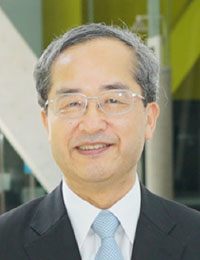
Yasuhiko Arakawa
Institute for Nano Quantum Information Electronics, The University of Tokyo
Yasuhiko Arakawa received his PhD degree in Electrical Engineering from The University of Tokyo in 1980. He became a full Professor, the Institute of Industrial Science, The University of Tokyo in 1993. He has been a Specially-Appointed Professor and a Professor Emeritus at The University of Tokyo since 2018. He is also a Program Director of the MEXT Q-LEAP program and the Supervisor of the CREST Quantum Technology project. His main research field is quantum dot photonics, including physics of quantum dots, quantum dot lasers, single photon sources, semiconductor cavity-QED and silicon photonics. He is a Foreign Member of the US National Academy of Engineering (MAE) and the Past President of International Commission for Optics (ICO). He published more than 800 journal papers and presented over 400 invited papers including more than 80 plenary/keynote papers at international conferences.
He received numerous awards, including ISCS Quantum Devices Award in 2002, Leo Esaki Award in 2004, IEEE/LEOS William Streifer Award in 2006, Fujiwara Award in 2007, IEEE David Sarnoff Award in 2009, Prime Minister Award in 2009, the Medal with Purple Ribbon in 2009, C&C Prize in 2010, Heinrich Welker Award in 2011, OSA Nick Holonyak Jr. Award in 2011, the Japan Academy Prize in 2017 and IEEE Jun-ichi Nishizawa Medal in 2018. He is a Fellow of IEEE. OSA, IEICE and JSAP.
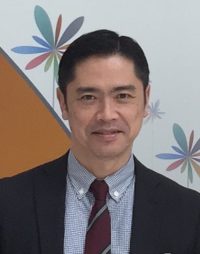
Susumu Kajiwara
Deputy Director-General, Science and Technology Policy Bureau
Ministry of Education, Culture, Sports, Science and Technology (MEXT)
Dr. KAJIWARA Susumu was appointed as a deputy director-general, MEXT in September 2019. He’s got a Doctor of Science at Tokyo Institute of Technology (Tokyo Tech) and then joined Kirin brewery Co. Ltd. He moved to Tokyo Tech as an assistant professor in 1995 and worked as an associate professor from 2001 to 2012. During that term, he also served as a deputy director, Council of Science and Technology Policy (CSTP), Cabinet Office of Japan (2003-2005). He served as a professor of Tokyo Tech in 2012 and then he was appointed as a vice president, Tokyo Tech in April 2018 (to 2019).
Opening Talks
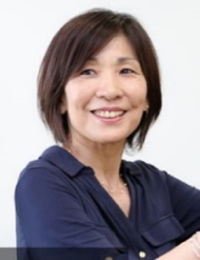
Mutsuko Hatano
Department of Electrical and Electric Engineering, School of Engineering, Tokyo Institute of Technology, National Institutes for Quantum and Radiological Science and Technology
Mutsuko Hatano received the Ph.D. degree from Keio University. She joined Central Research Laboratory, Hitachi Ltd., Tokyo, Japan, and was engaged in research and development on the superconducting devices, mobile displays, and power electronics. She was a chief researcher at the CRL and the project manager of the environment electronics. She was a visiting researcher at the University of California, Berkeley from 1998 to 2000. In 2010, she joined Tokyo Institute of Technology as a professor of Electrical and Electronic Engineering. She is also a Section Manager of National Institutes for Quantum and Radiological Science and Technology. Her main research field is wide-gap semiconductor devices for power electronics and for quantum sensing. She is a fellow and a president of the Japan Society of Applied Physics.
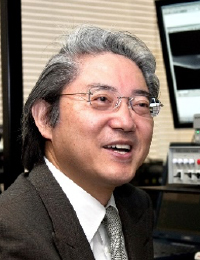
Yoshinobu Baba
Institute for Quantum Life Science, National Institutes for Quantum and Radiological Science and Technology Institute of Nano-Life-Systems, Nagoya University
Yoshinobu Baba received PhD degree in 1986 from Kyushu University. After Assistant Professor at Oita University and Associate Professor at Kobe Pharmaceutical University, he was promoted to the full professor at The University of Tokushima in 1997. He was moved to Nagoya University in 2004. He is now a Professor of Department of Chemistry and Biotechnology, School of Engineering, a Professor of Department of Advanced Medical Science, School of Medicine, and a Director of Institute of Nano-Life-Systems, Nagoya University. He is also a Director General of Institute for Quantum Life Science, National Institutes for Quantum and Radiological Science and Technology (QST), a Program Director of JST CREST “Extracellular fine particles” Project, and a Project Leader of MEXT Quantum Leap Flagship Program (MEXT Q-LEAP) on Quantum Life Science. He is a co-initiator for the world largest Nanotech International Meeting and the world largest Microfluidics International Meeting. He is a general chair of numerous international meetings (microTAS, MSB, nanotech, ISMM). He is an Associate Editor of Anal. Chem. of ACS and serving to over 10 scientific journals as an editorial/advisory board member. He has been admitted as a Fellow of the Royal Society of Chemistry and received over 90 awards for his contributions in nanobiotechnology. Dr. Baba’s research studies are directed at the development of nanobiodevices for omics, systems biology, medical diagnosis, tissue engineering, and molecular imaging. He is the author or co-author of 1,051 publications, including research papers, proceedings, reviews, and books and is also an inventor of over 100 patents. He has delivered more than 1,010 plenary and invited lectures at conferences. His work has been cited on 488 occasions by newspapers and television.
Invited Lectures
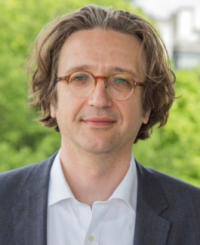
Fedor Jelezko
Institute of Quantum Optics, Ulm University, Germany
Fedor Jelezko is a director of the Institute of Quantum Optics and fellow of the Center for Integrated Quantum Science and Technology (IQST) at Ulm University. He studied in Minsk (Belarus) and received his Ph.D. in 1998. After finishing the habilitation in 2010 at Stuttgart University he was appointed as a professor of experimental physics in Ulm in 2011. His research interests are at the intersection of fundamental quantum physics and application of quantum technologies for information processing, communication, sensing, and imaging.
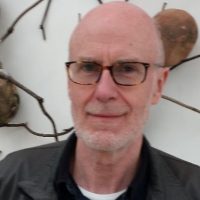
Johnjoe McFadden
The University of Surrey, UK
Johnjoe McFadden is Professor of Molecular Genetics and Director of the Quantum Biology Doctoral Training Centre at the University of Surrey. As well as his molecular genetics research over the past 20 years, McFadden pioneered the proposal that quantum mechanics is fundamental to biology with his book, Quantum Evolution, published in 2001 and most recently and with co-author, Jim Al-Khalili, Life on the Edge, which provides an update on the emerging field of quantum biology. His current research is focussed on quantum biology, investigating many different areas, from magnetoreception to mutation and the role of EM fields in the brain. He is currently writing a book on the role of Occam’s razor, the principle that, given a choice, we should always accept the simplest solutions.
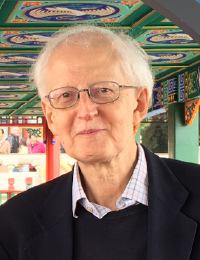
Peter J. Hore
Department of Chemistry, University of Oxford, UK
Peter J. Hore has spent most of his life in the Chemistry Department of the University of Oxford, first as an undergraduate and a graduate student (1973-80) and then, after a two-year postdoc at the University of Groningen, as a Junior Research Fellow at St John’s College. In 1983 he was appointed to a University Lecturership in Physical Chemistry and a Tutorial Fellowship at Corpus Christi College.
Much of his research has been in the area of Spin Chemistry. He has worked on topics such as photosynthetic energy conversion, protein structure and folding, spin hyperpolarization, spin dynamics, new magnetic resonance techniques, and the effects of weak electromagnetic fields on chemical and biological processes. For the last ten years, he has been trying to unravel the biophysical mechanism by which migratory birds detect the direction of the Earth’s magnetic field as a navigational aid.
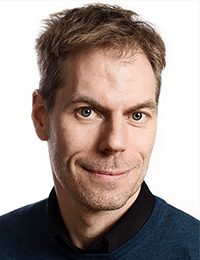
Ulrik Lund Andersen
Center for macroscopic quantum states (bigQ), Department of Physics, Technical University of Denmark (DTU), Denmark
Ulrik Lund Andersen is a Full professor in quantum optics and quantum information, heading the section for Quantum Physics and Information Technology (QPIT) and leading the Center of Excellence on Macroscopic Quantum States (2017-2023). He is also heading a cross-disciplinary center on quantum technology at DTU (www.quantum.dtu.dk). Over the course of his career he has made a very broad range of significant, high-impact contributions to quantum optics, technology, and information including the development of new techniques to generate, control and optimally measure non-classical states of light (Gaussian, non-Gaussian and entangled states). His impact is reflected by the publication of numerous articles in Nature magazines and Physical Review Letters. For these contributions he won several prizes, e.g. the advanced Sapere Aude award in 2015 and the prestigious Eliteforsk prize of the Danish Research Council in 2013.
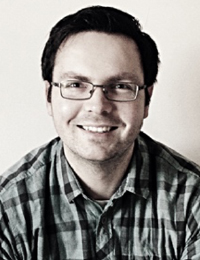
Frank Schlawin
The Hamburg Centre for Ultrafast Imaging
Max-Planck Institute for the Structure and Dynamics of Matter, Germany
Frank Schlawin completed his PhD at the University of California, Irvine, USA, under the supervision of Prof. Shaul Mukamel, and at the University of Freiburg, Germany, from which he received his degree, under the supervision of Prof. Andreas Buchleitner. In 2015, he joined the group of Prof. Dieter Jaksch at the University of Oxford. In 2020, he then moved to Hamburg to work as a group leader at the Centre for Ultrafast Imaging (CUI).
His research interests span current research areas concerning the interaction of quantum light with complex quantum systems. Since the time of his PhD, he works on the theory of nonlinear spectroscopy with quantum light. He is particularly interested in the role of photonic quantum correlations in absorption processes, and how these can be employed for spectroscopic applications. Besides, he is also interested in how optical cavities can be employed to manipulate material properties in the strong coupling regime.
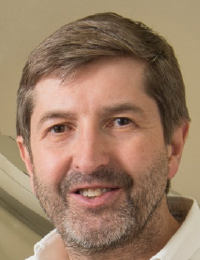
Ronald Walsworth
Quantum Technology Center, University of Maryland, U.S.A.
Ronald Walsworth is a Minta Martin Professor in the Department of Electrical and Computer Engineering and the Department of Physics at the University of Maryland. He is also the Founding Director of the Quantum Technology Center (QTC), a cross-disciplinary center at the University of Maryland focusing on the translational applications of research in quantum science; and a Fellow of the Joint Quantum Institute (JQI). Prior to joining the University of Maryland in 2019, Walsworth held appointments as a faculty member at Harvard University in the Department of Physics; and as a Senior Physicist with the Smithsonian Astrophysical Observatory.
Prof. Walsworth leads an active interdisciplinary research group focused on developing precision measurement tools for applications in the physical and life-sciences based on quantum science. He has advised over 100 students and postdoctoral researchers, and has published nearly 200 peer-reviewed scientific papers. Walsworth is an inventor on 14 allowed U.S. Patents, including the original patents covering conventional techniques for magnetometry using nitrogen vacancy (NV) quantum defects in diamond. He has co-founded four technology companies and served on the Scientific Advisory Board of four companies.
Prof. Walsworth holds a PhD in Physics from Harvard University (1991) and a B.S. in Physics from Duke University (1984). He currently serves on the NASA Fundamental Physical Science Standing Review Board; and has previously been a member of the NAS/NRC Committee on Atomic, Molecular and Optical Sciences (2010-2013), the NAS/NRC Decadal Survey on Biological and Physical Sciences in Space (2009-2011); and served as Chair of the DOE Quantum Sensor Roundtable (2016). Walsworth received the Francis M. Pipkin Award from the American Physical Society (2005) and the Exceptional Service Award from the Smithsonian Institution (1993). He was elected a Fellow of the American Physical Society (2001) and currently serves as a Distinguished Traveling Lecturer for the American Physical Society.
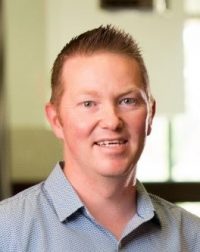
David Simpson
School of Physics at The University of Melbourne, Australia
David Simpson is a Senior Lecturer in Physical Biosciences within the School of Physics at The University of Melbourne. He obtained his PhD in applied physics from Victoria University in 2008 and has spent the past decade researching and commercialising quantum technology. His current research focuses on the development of novel diamond-based sensors for precision sensing and imaging of biological systems. He has established new technology platforms to image the magnetic and electrical properties of biological systems with unpreceded resolution. In 2013, Dr Simpson was part of the team awarded, Eureka Prize for Interdisciplinary Research, for work on quantum probes in biology. His broader research interests include quantum measurement, precision sensing, nanoscale magnetic resonance spectroscopy and the material properties of diamond.
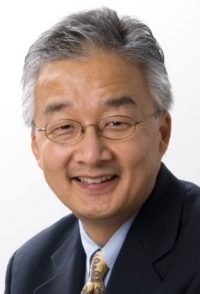
Luke P. Lee
Harvard University, U.S.A.
Sungkyunkwan University, Korea
Prof. Luke P. Lee received both his BA in Biophysics and PhD in Applied Physics and Bioengineering from UC Berkeley. He joined the faculty at UC Berkeley in 1999 after more than a decade of industry experience. He became the Lester John and Lynne Dewar Lloyd Distinguished Professor of Bioengineering in 2005. He also served as the Chair Professor in Systems Nanobiology at the ETH Zürich from 2006 to 2007. He became Arnold and Barbara Silverman Distinguished Professor at Berkeley in 2010. He founded the Biomedical Institute for Global Healthcare Research & Technology (BIGHEART). He served as Associate President (International Research and Innovation) and Tan Chin Tuan Centennial Professor at the National University of Singapore from 2016 to 2018. He is the founding director of the Institute of Quantum Biophysics, Sungkyunkwan University, Korea. He is now serving as Professor of Medicine at Harvard Medical School and Brigham Women’s Hospital. He is a Fellow of the Royal Society of Chemistry and the American Institute of Medical and Biological Engineering. His work at the interface of biological, physical, and engineering sciences for translational medicine has been recognized by many honors, including the IEEE William J. Morlock Award, NSF Career Award, Fulbright Scholar Award, and the HoAm Prize. Lee has over 350 peer-reviewed publications and over 60 international patents filed. His current research interests are quantum biology, smart optofluidic systems for the early detection of infectious diseases, cancer, and neurodegenerative diseases, and in vitro neurogenesis, and solving ill-defined problems of global healthcare.
Closing remarks
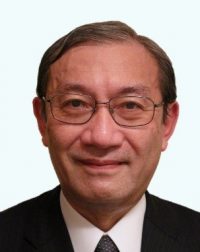
Hidemi Ishiuchi
Sub Program Director of the MEXT Q-LEAP
Hidemi Ishiuchi received the B.S. and M.S. degrees in physics at the University of Tokyo in 1978 and 1980, respectively. Since he joined Toshiba Corporation in 1980, he has been working on DRAM development. From 1988 to 1989, he has been at Stanford University as a Visiting Scholar to study BiCMOS technologies. From 1993 to 1995, he has been at IBM East Fishkill as a member of 256M bit DRAM joint development project among IBM, Siemens, and Toshiba. From 1996 to 2006, he has been working on development of advanced CMOS technologies including SOI MOSFETs, RF mixed signal CMOS technology, embedded DRAM technology, TCAD (Technology CAD), etc. In 2007, he moved to Corporate Research and Development Center, working on semiconductor devices and HDD. He was Director of Center for Semiconductor Research and Development Center in 2008 and Chief Technology Executive of Semiconductor Company from 2009 to 2013. From 2016 to 2019, he has been President of EIDEC, a consortium for R&D of semiconductor process technology including EUV (Extreme Ultra Violet) lithography. Since 2019, he has been Assistant to General Manager of Technology and Innovation Division, Kioxia Corporation. He retired from Kioxia Corporation in October, 2020.
He is currently a Sub Program Director of the MEXT Q-LEAP, which is a national project on quantum technology. He is a member of the Japan Society of Applied Physics, the Physical Society of Japan, and IEEE.